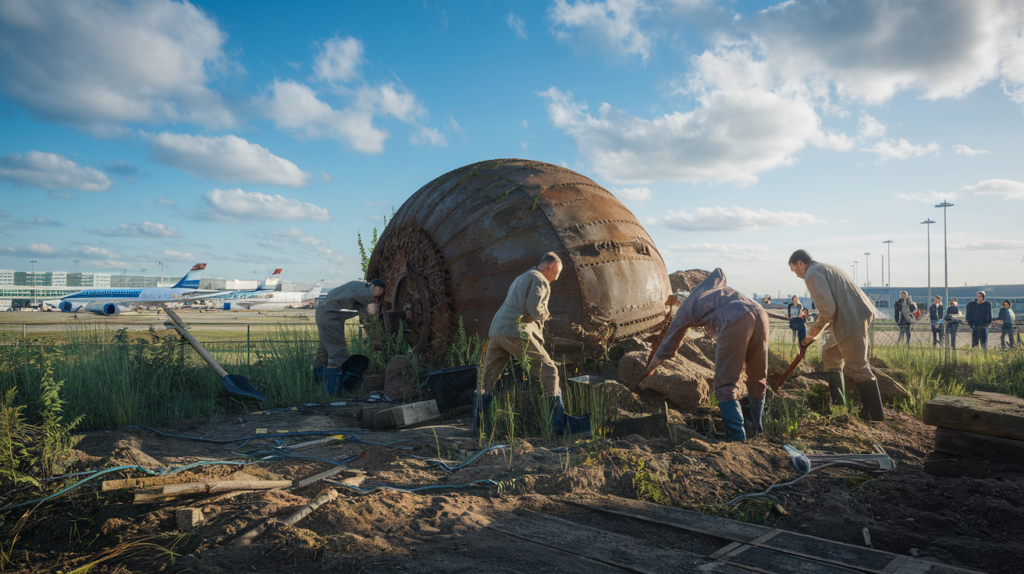Maintenance of a airliner is a process complex and rigorous safety thefts. Between minor interventions and visits A, B, C and Deach step involves a inspection verification of the systemsthe control of engines and replacement of damaged parts. Specific tools, such as measuring instruments and test equipment, guarantee precise intervention. This process is carried out to strict standards laid down by international bodies such as the EASA and FAA. This approach maintains the aircraft's performance and ensures an excellent level of safety. safety in flight.
Visit maintenance of an airliner is a process rigorous and complex safety thefts. Each intervention follows a meticulous methodology to ensure that all systems work in perfect harmony. This field combines technical expertise, strict compliance with standards and a real passion for aviation.
Maintenance levels
Airliner maintenance is divided into several levels, each targeting specific operations. The line maintenance or "line maintenance" is carried out between two flights. It includes quick checks, a supply and cleaning of the aircraft. This level enables us to quickly identify and correct minor problems, to ensure a trouble-free flight.
More in-depth inspections are carried out during type A, B, C and D inspections. For example, the A includes an in-depth review of mission-critical systems. D represents a complete overhaul of the unit. Each intervention is scheduled at precise intervals to ensure unrivalled reliability. You can find out more about these processes at this link.
The main stages of maintenance
Each intervention follows specific steps. Right from the start, a visual inspection is carried out to detect any anomalies such as signs of corrosion or wear. This first step is crucial in the early detection of potential problems.
A detailed check of the various systems is then carried out. Hydraulic, electrical, pneumatic and fuel systems are tested to ensure optimum functionality. At the same time, the engines undergo a complete inspection, including cleaning and adjustment if necessary. This technical inspection is of vital importance for the safety flight.
If defective or worn parts are detected, they are immediately replaced and repaired. Strategic points are lubricated to avoid excessive friction. Finally, all interventions are carefully documented to guarantee total traceability and compliance with current standards.
Tools and equipment used
Maintenance teams use a wide range oftools to diagnose and rectify anomalies. These include measuring tools help to check dimensions and tolerances, while electrical and pneumatic instruments enable drilling, grinding and screwing operations to be carried out with the utmost precision.
In addition to these mechanical tools test equipment electronic and electrical systems. This high-tech approach is essential to ensure perfect aircraft operation and maximum safety.
Regulations and issues
Aeronautical maintenance is closely supervised by international bodies such as the European Aviation Safety Agency (EASA) and the European Aviation Safety Agency (EASA). air safety (EASA) or the Federal Aviation Administration (FAA). These authorities impose strict standards, ensuring that every maintenance operation meets the highest standards.
Compliance with these standards is vital to maintaining passenger confidence and ensuring the smooth operation of airlines. Innovative initiatives and strategic partnerships, such as the one unveiled by certain players in the sectorThese projects illustrate the importance of close collaboration between the various players in the industry.
Technological advances and constant monitoring of regulations enable us to continually improve maintenance processes, thus guaranteeing optimum management of our assets. airliners. Recent articles detailing the implications of these processes are available, for example here and other specialized pages.
Initiatives to diversify and enrich the sector, particularly in support of women's careers, demonstrate the industry's commitment to greater recognition and equality. To find out more about these initiatives, visit this article.
The influence of government policies on innovation and competitiveness in the aeronautics sector is also significant. For example, strategic collaborations are encouraged, such as the Brazilian government's support for the union of companies, aimed at boosting the industry. To find out more, visit this link.
Airliner maintenance process
| Aspect | Brief description |
|---|---|
| Line maintenance | Quick checks between flights (cleaning, refuelling, minor adjustments). |
| Visual inspection | Careful examination of the structure and components. |
| System verification | System control hydraulic, electrical and tires. |
| Motor control | Inspection, cleaning and adjustment to ensure performance. |
| Component repair | Replace worn parts to ensure long service life safety. |
| Lubrication | Grease friction points to reduce wear. |
| Documentation | Detailed recording to maintain traceability operations. |
| Specialized tools | Use ofmeasuring tools, electrical and tires. |
| Regulations | Strict compliance with standards EASA and FAA for safety. |
On the same theme
Discovering Croatia: Must-see activities and places to explore
Croatia dazzles with its natural and cultural gems. Explore the ramparts of Dubrovnik, witness to a rich history, or stroll through the orange-roofed old town. The Plitvice lakes captivate with their enchanting waterfalls. Enthusiastic Zadar offers...
Discovering interior innovations: meeting the future of aircraft cabins
Embark on a journey to the heart of aeronautical innovation! Discover with fascination the technological advances that are transforming aircraft cabins into veritable jewels of comfort and modernity. Prepare to be surprised and amazed by the future of travel...
World War II shell discovered near Nantes airport
A World War II shell has been discovered near Nantes airport, which had been lying dormant for 80 years near the runways. Weighing 250 kg, the explosive device was unearthed by workers working on a...







